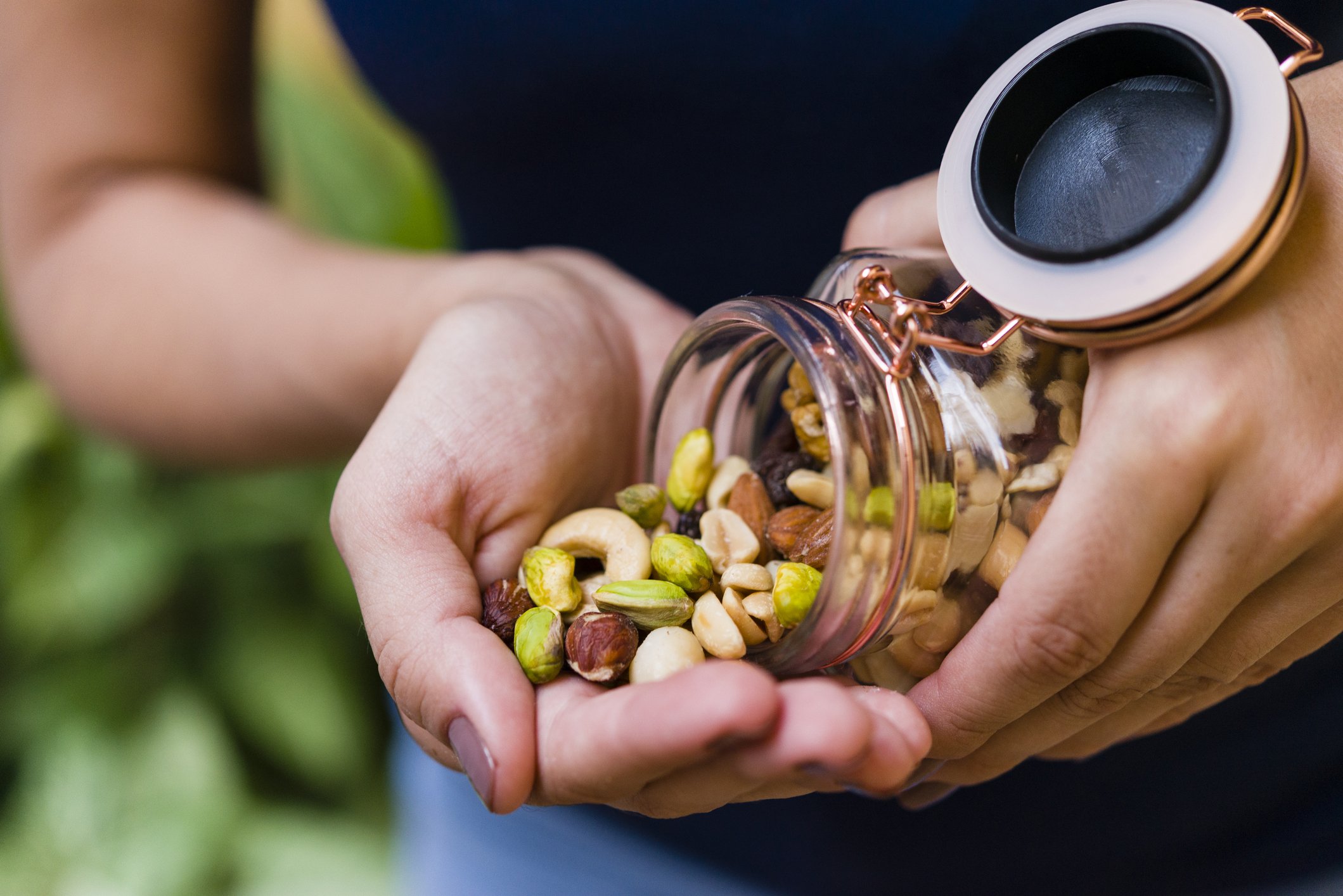
Lower Your Blood Pressure with DASH
What you eat can help lower your blood pressure. Lower blood pressure means reduced risk for stroke, heart disease, heart failure, kidney disease, and even blindness.
The Dietary Approaches to Stop Hypertension (DASH) diet, when implemented in tandem with other lifestyle modifications such as regular exercise and stress management, has proved to be an effective method to reduce blood pressure. The DASH Diet is low in saturated fat, cholesterol, and total fat, and emphasizes fruits, vegetables, and low-fat dairy products.
What is included in the DASH Diet
The DASH diet includes:
-
6 to 8 daily servings of grains and grain products, such as whole-wheat bread, cereal, oatmeal, crackers, unsalted pretzels, and popcorn. A serving size is 1 slice of bread, 1 cup of ready-to-eat cereal, or 1/2-cup of rice, pasta, or cereal.
-
4 to 5 daily servings of vegetables; the darker in color, the better. A serving size is 1 cup of raw leafy vegetables, a 1/2-cup of cooked vegetables, or 6 ounces of vegetable juice.
-
4 to 5 daily servings of fruit. A serving size is 1 medium fruit, 1/4-cup of dried fruit, 1/2-cup of fresh, frozen, or canned fruit.
-
2 or 3 daily servings of low-fat or fat-free dairy products. A serving size is 8 ounces of milk, 1 cup of yogurt, or 1½ ounces of cheese.
-
6 or fewer daily servings of lean meat, poultry, or fish. A serving size is 1 ounce of cooked meats, skinless poultry, or fish.
-
4 to 5 servings per week of nuts, seeds, and dry beans. A serving size is 1/3-cup or 1½ ounces of nuts, 1 tablespoon or 1/2-ounce of seeds, or 1/2-cup cooked dried beans.
-
2 to 3 small daily servings of fats and oils like olive oil and low-fat salad dressing. A serving is 1 teaspoon soft margarine, 1 tablespoon low-fat mayonnaise, 2 tablespoons light salad dressing, or 1 teaspoon vegetable oil. Avoid fats that are saturated (animal fats) or trans fats.
-
5 or fewer servings per week of sweets like maple syrup, sorbet, or gelatin. A serving is 1 tablespoon sugar, 1 tablespoon jelly or jam, or 8 ounces of lemonade.
If you're serious about following the DASH diet, work with a registered dietitian (RD) for guidance.
Moving forward with DASH
Adopt the DASH diet slowly. By doing so, you'll be more likely to stick to it in the long-term. For instance, if you eat only 1 or 2 servings of vegetables a day, add just 1 additional serving of vegetables at each meal to start. Consider reaching your recommended servings of fruit as snacks in between meals. Slowly increase your dairy consumption by drinking skim milk with lunch or dinner instead of soda, alcohol, or tea.
To see benefits on your blood pressure, the DASH Diet is key in a series of important lifestyle modifications. Exercising regularly, between 30-40 minutes of moderate to vigorous aerobic exercise 4 to 5 days a week, is recommended. Cut down on stress by making a weekly plan that maps out your commitments and includes a plan for meals. Meal prepping can be dually beneficial when trying to stick to the DASH Diet.
Becky Espinel is a Registered Dietitian Nutritionist with Barton Nutrition. Barton Nutrition works with care providers to develop nutrition programs that fit your individual needs. Barton Dietitians are available for consultation. For more information or to schedule Nutrition counseling at Barton, call 530.543.5825 or visit BartonHealth.org.